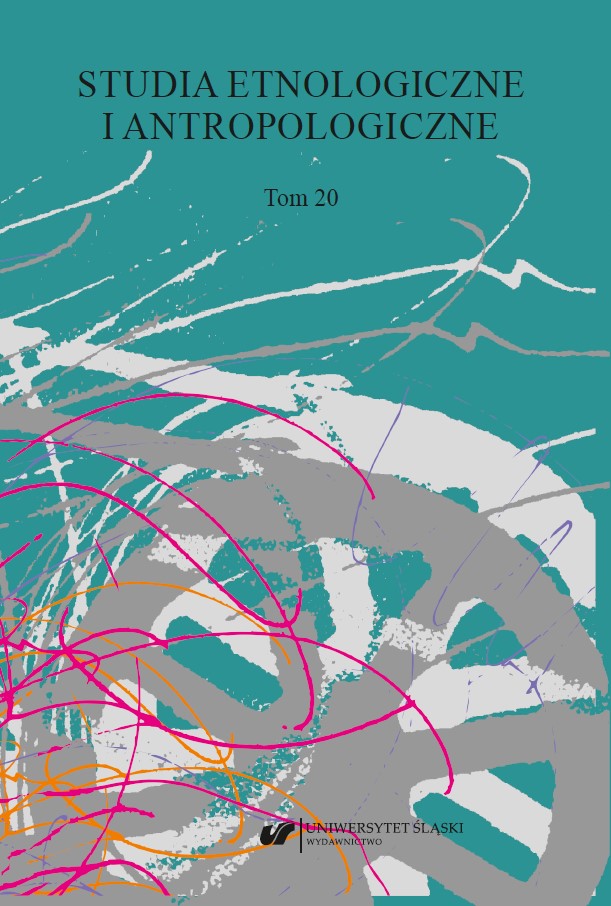Baranowski B.: Podstawowa siła pociągowa dawnego rolnictwa w Polsce. Wrocław 1966.
Google Scholar
Buchowski M.: Magia. Poznań 1986.
Google Scholar
Bystroń J.S.: Dzieje obyczajów w dawnej Polsce. Wiek XVI–XVIII. Warszawa 1976.
Google Scholar
Cząstka-Kłapyta J.: Kolędowanie na Huculszczyźnie. Kraków 2014.
Google Scholar
Gruchoła M.: Zwyczaje, obrzędy i wierzenia związane z kobietą w ciąży oraz prognozy i wróżby dotyczące płci mającego się narodzić dziecka – studium wsi Białobrzegi w województwie lubelskim. „Roczniki Kulturoznawcze” 2015, t. 6, nr 3, s. 15–42.
Google Scholar
Jagla J.: Święty Roch pielgrzym uzdrawiający chory świat. „Spotkania z Zabytkami” 2004, nr 7.
Google Scholar
Januszkiewicz B.: Żywa tradycja święcenia zwierząt gospodarczych w południowej Wielkopolsce. „Lud” 1971, t. 55, s. 173–180.
Google Scholar
Kalniuk T.: Dualność dzieci i starców w polskiej kulturze ludowej. Toruń 2015. https://repozytorium.umk.pl/bitstream/handle/item/2969/Ambiwalencja%20obrazu%20dziecka%20i%20starca%20.pdf?sequence=1 [data dostępu: 24.01.2019].
Google Scholar
Kielak O.: Zwiastuni śmierci, żałobnicy i ostatni towarzysze podróży. Zachowania zwierząt domowych w obliczu śmierci człowieka w polszczyźnie ludowej. „Zoopholologica” 2017, nr 5, s. 35–46.
Google Scholar
Klimaszewska J.: Zakazy magiczne związane z rokiem obrzędowym w Polsce. „Etnografia Polska” 1961, t. 4, s. 109–140.
Google Scholar
Kolberg O.: Dzieła wszystkie. T. 24: Mazowsze. Cz. 1. Wrocław–Poznań 1963.
Google Scholar
Kolberg O.: Dzieła wszystkie. T. 10: W. Ks. Poznańskie. Cz. 2. Wrocław–Poznań 1963.
Google Scholar
Królikowska A.M.: Elementy „ludowe” w religijności współczesnej? „Opuscula Sociologica” 2014, nr 4 (10), s. 5–16.
Google Scholar
Michalec K.: Coraz więcej matek wierzy w moc czerwonej kokardki przy wózku dziecka. Nowa moda czy zwykły zabobon? 8.07.2012. https://natemat.pl/22371,coraz-wiecej-matek-wierzy-wmoc-czerwonej-kokardki-przy-wozku-dziecka-nowa-moda-czy-zwykly-zabobon [data dostępu: 8.02.2019].
Google Scholar
Moszyński K.: Kultura ludowa Słowian. T. 2: Kultura duchowa. Cz. 1. Warszawa 1957.
Google Scholar
Nawrocki S.: Powiat ostrzeszowski dawniej i dziś. Poznań 1967.
Google Scholar
Niedźwiedź A.: Od religijności ludowej do religii przeżywanej. „Kultura ludowa. Teorie, praktyki, polityki” 2014, s. 327–338.
Google Scholar
Piwowarski W.: Wprowadzenie. W: Religijność ludowa. Ciągłość i zmiana. Red. W. Piwowarski. Wrocław 1983, s. 6–25.
Google Scholar
Robotycki C.: Tradycja i obyczaj w środowisku wiejskim. Studium etnologiczne wsi Jurgów na Spiszu. Wrocław 1980.
Google Scholar
Strzelec M.: Kult świętego Rocha jako czynnik integrujący rodzinę i społeczność lokalną (na przykładzie parafii Mikstat w południowej Wielkopolsce). „Ecclesia. Studia z dziejów Wielkopolski” 2010, nr 5, s. 261–297.
Google Scholar
Szacki J.: Tradycja. Przegląd i problematyki. Warszawa 1971.
Google Scholar
Święty Roch w Mikstacie. https://regionwielkopolska.pl/kultura-ludowa/zwyczaje-regionalne/lato/swiety-roch-w-mikstacie.html [data dostępu: 8.02.2019].
Google Scholar
Ulik weselny. https://bartnik.pl/ulik-weselny/ [data dostępu: 26.01.2019].
Google Scholar
Zacharek N.: Udział zwierząt gospodarskich w ludowych obrzędach dorocznych. „Zoophilologica. Polish Journal of Animals Studies” 2017, t. 3, s. 83–96.
Google Scholar
Zacharek N.: Zwierzę domowe jako członek rodziny w XIX i XXI wieku. „Tematy z Szewskiej”, 2017, nr 2 (19), s. 96–112.
Google Scholar
Zadrożyńska A.: Powtarzać czas od początku. Warszawa 1985.
Google Scholar
Żurawski Z.: Odpust w Mikstacie. „Literatura Ludowa” 1982, nr 3, s. 13–24.
Google Scholar


 https://doi.org/10.31261/SEIA.2020.20.04
https://doi.org/10.31261/SEIA.2020.20.04

 10.31261/SEIA
10.31261/SEIA